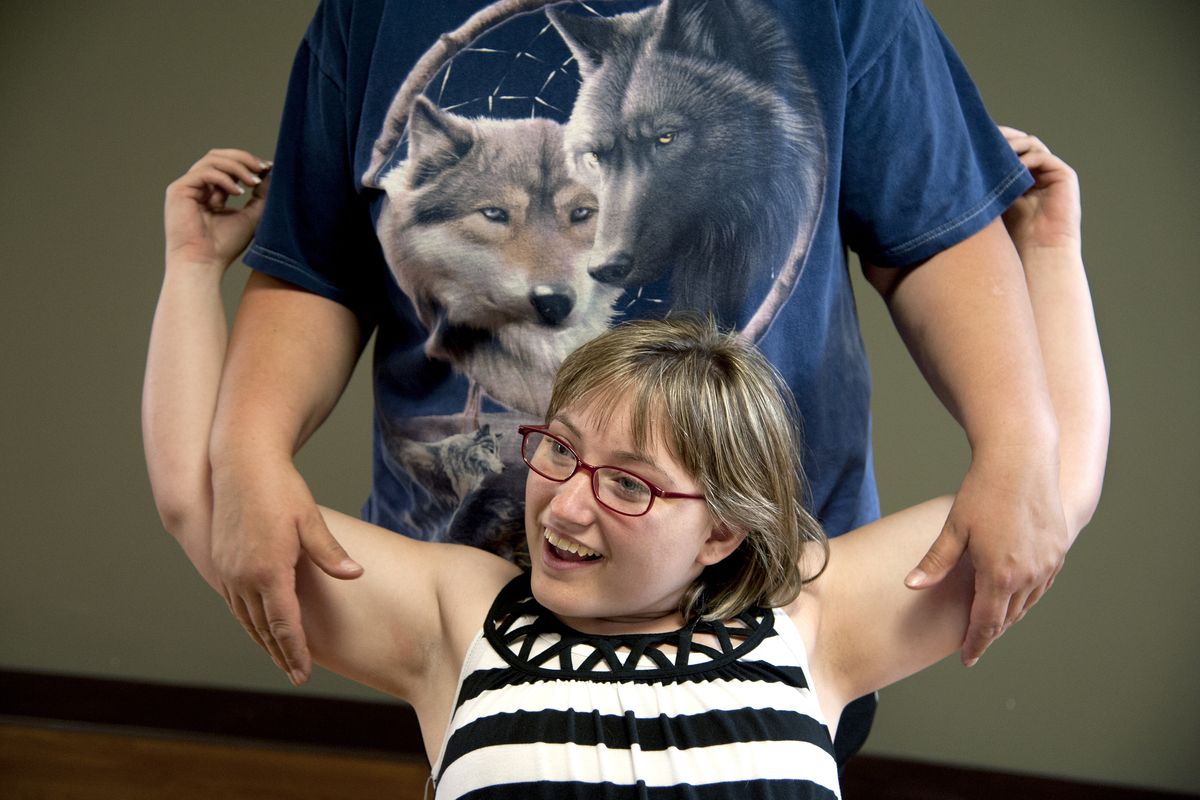Water power
For athletes with disabilities, swimming offers boost for muscles, endurance

Using a freestyle stroke to cut through the water, Kim Sutton draws praise from her poolside coach, Jaime Hopoi. Sutton, 18, crosses the pool in a straight line, rather than veering off – her awareness of her body’s place in space has improved, Hopoi says.
But the coach sends the swimmer back across the pool again, this time by way of the backstroke, because it’s good for her.
The backstroke forces Sutton, who has spina bifida and no use of her legs, to use her chest to keep her hips elevated, which helps prevent her legs from dragging and slowing her down. The stroke helps loosen up her trunk and improve flexibility.
Beyond boosting flexibility in joints and muscles, swimming strengthens muscles and the cardiovascular system while building endurance. For athletes with disabilities, swimming – among the most popular sports at the Paralympic Games – offers other advantages, too. Buoyant and forgiving, the water minimizes stress on vulnerable parts of the body, and the sport offers a high degree of adaptability: Swimmers with limb loss, for example, can work with coaches to find a way around it.
And starting this summer, it may be easier for some people with disabilities to take to the water: Most public pools must now be accessible to comply with federal regulations.
One Paralympic swim coach has called the water a “big equalizer.”
Out of the pool, Sutton, a senior at Newport High School, is restricted to her wheelchair, said Stephanie Foust, Sutton’s caregiver, watching from a poolside bench. In the pool, she’s cut loose.
“There’s freedom in there,” Foust said.
Hopoi is a coach for Team St. Luke’s, a recreation program at St. Luke’s Rehabilitation Institute for people with physical disabilities. She’s also a physical therapist who works with patients with spinal cord injuries. Hopoi swam for Pepperdine University’s team.
“Cardiovascularly, swimming is a great way to get a workout and use all those parts they don’t get to use in the wheelchair,” Hopoi said.
For swimmers on Team St. Luke’s, the water takes weight-bearing out of the picture, she said, removing a barrier that sometimes hinders people with disabilities in other sports. Swimming also helps alleviate the uncontrolled tightening of muscles experienced by some people with spinal cord injuries, she said.
Finding the right adaptation for a swimmer with a disability is a process of trial and error, she said. Each swimmer might need to find his or her own best way to compete. An amputee without a right leg may end up relying heavily on his left arm to maintain his balance in the water.
Sutton started learning to swim at age 4.
In her most recent major surgery, Sutton’s spinal cord was “untethered” from her spinal column. After surgery, she had to adapt again, working to regain her equilibrium in the water after her body changed.
“The nice thing about water is it slows things down,” Hopoi said, giving swimmers and their coaches leeway as they work to find the best techniques.
Spokane Area Swimming, a team of about 50 swimmers ages 6 to 21 operating under the jurisdiction of USA Swimming, trains swimmers with disabilities alongside those without, said Kalen Darling, the team’s head coach.
The team includes a swimmer with a neuromuscular disorder and an East Valley High School senior, Michelle Kazuba, who has dwarfism and who’s placed first in state and national races. Darling said he’s seen other swimmers compete with a diversity of other disabilities.
“There’s people that do really well with just arms in swimming, and people that do very well with neither arms or legs,” he said. “It’s incredible.”